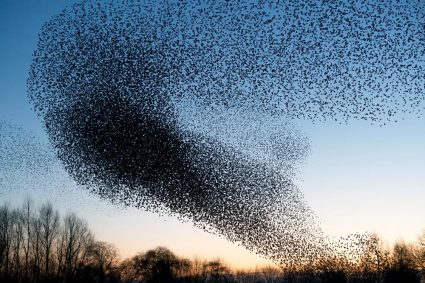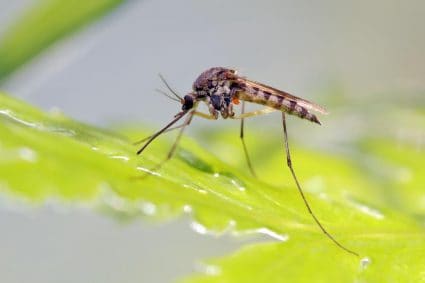
Deer are majestic creatures, but they can be a nuisance, especially when they venture into your garden and feast on your plants. Understanding what deer hate can help you keep them at bay and protect your garden. In this comprehensive guide, we’ll cover the plants, smells, sounds, and other deterrents that deer dislike.
Deer tend to dislike certain plants such as daffodils, foxgloves, and garlic due to their strong aromas or textures. They are also repelled by certain scents like mint, human hair, and predator urine. Loud, sudden sounds and bright lights can startle and deter them. Additionally, deer avoid areas with high human activity, man-made structures like fences, and the presence of their natural predators.
Plants Deer Dislike
Deer are not fans of certain plants. They typically avoid plants that are poisonous, have a strong aroma, or have fuzzy, spiny, or tough textures. Some of the plants that deer tend to avoid include daffodils, foxgloves, poppies, chives, onions, sunflowers, garlic, marigolds, Russian sage, bee balm, and lamb’s ear. Other deer-resistant plants include boxwood, cinquefoil, spirea, juniper, and ferns. However, it’s important to remember that no plant is completely deer-proof, and if deer are hungry enough, they may still eat plants that are considered deer-resistant.
Scents Deer Hate
Deer have a keen sense of smell, and they find several scents repulsive. These include the strong scent of mint plants, the pungent odor of garlic, the smell of human hair, the aroma of Irish Spring soap, the capsaicin in hot peppers, the scent of eucalyptus, and the overwhelming scent of lavender. The scent of predator urine, such as from wolves or coyotes, can also deter deer as it triggers their instinctual fear of predators.
Sounds That Deter Deer
Deer have a hearing range similar to that of humans, typically between 20 Hz to 20 kHz. They are sensitive to certain types of noise, and bright, sudden sounds can startle them. However, deer are also vocal animals and communicate using various sounds. They produce a loud snort when they sense danger, alerting other deer in the area. Bucks make grunting sounds to show dominance, while does use softer grunts to communicate with their fawns.
Visual Stimuli Deer Dislike
Deer are sensitive to sudden changes in their environment. Bright lights can startle them, causing them to retreat or avoid certain areas altogether. However, their reaction to light is not solely about color perception. Deer have limited color vision but excellent motion detection and wide-ranging peripheral vision, which allows them to detect movement within their surroundings easily. Using visual repellents such as flags or streamers can help create a visual barrier that deters deer.
Deer’s Natural Predators
Deer have several natural predators, including wolves, coyotes, and mountain lions. The presence of these predators can greatly affect deer behavior and movement. Deer are always on high alert for these predators, and the scent of these predators can be used as a deterrent.
Man-Made Structures Deer Avoid
Deer tend to avoid man-made structures like major roads, artificial lighting, fences and barriers, and human infrastructure. They can be deterred by physical barriers such as wraps, netting, and small fencing. They are sometimes reluctant to enter a smaller area like a fenced bed of plants or shrubs.
Human Activity Impact
Human activity and presence can impact deer behavior and movement. Hunting, human presence and recreation, habitat disturbance, human-deer interactions, and indirect effects of human activities can all alter deer behavior.
Natural Deer Repellents
There are several natural deer repellents that you can use to protect your garden from deer. These include soap deer repellent, smelly deer repellent spray, essential oil deer repellent, strong-smelling herbs, fuzzy or prickly foliage, homemade putrid smell spray, and human hair.
In conclusion, understanding what deer hate can help you protect your garden and crops from these creatures. By using deer-resistant plants, repellents, and other deterrents, you can keep deer at bay and enjoy your garden in peace.
Frequently Asked Questions
What other man-made structures can deter deer?
In addition to fences and barriers, deer can also be deterred by strategically placing mirrors or reflective surfaces in your garden. The unexpected reflection can startle them and keep them away.
How often should I apply natural deer repellents?
The frequency of application depends on the type of repellent and the severity of the deer problem. Generally, it’s recommended to apply repellents every two to four weeks. However, if it rains, you may need to reapply the repellent more often as it can get washed away.
Can human activity scare away deer?
Yes, human activity can definitely scare away deer. They are naturally cautious creatures and tend to avoid areas with frequent human activity.
Can I use motion-activated sprinklers to deter deer?
Yes, motion-activated sprinklers can be effective in deterring deer. The sudden movement and sound of the sprinkler can scare deer away.
Can I use a dog to deter deer?
Yes, a dog can be a good deterrent for deer. Deer are naturally afraid of predators, and a barking dog can scare them off. However, make sure your dog is safe and not at risk of chasing or injuring the deer.











